Otocinclus are well-known for their algae-eating abilities, but it’s rare that any pet is so one dimensional. The Otocinclus needs a varied diet of fish food, veggies, and algae to thrive.
Otocinclus eat an algae-based diet and can survive on predominantly algae; however, they benefit greatly from veggies, fish food, and targeted algae wafers.
Otocinclus are fairly easy to care for, but as with any fish, adjusting their diet is an important part of ensuring they can thrive in your aquarium.
Keep reading, because I’m going to provide a helpful breakdown of what the Otocinclus eats and how you can target feed them for best results.
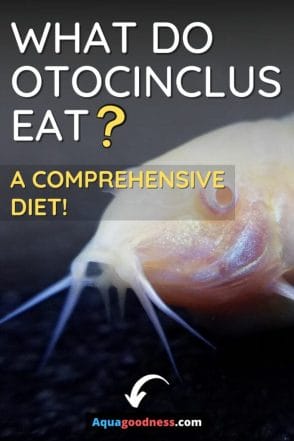
Table of Contents
Do Otocinclus Eat Algae?
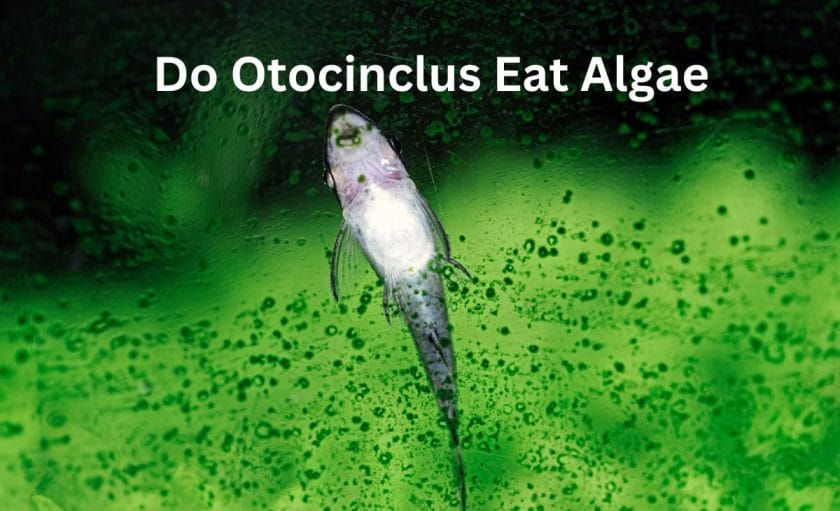
It’s fairly common knowledge that otocinclus love algae. In fact, they’re one of the most prolific algae-eating catfish available for aquariums. So much so that they can live on a diet consisting of only algae.
The operative word is ‘can’; they should still be fed a varied diet of fish food, algae wafers, and veggies every now and again. In a technical sense, otocinclus eat diatoms and biofilm on the surface of the tank, so they don’t exclusively eat algae.
Generally, the underlying assumption is true: otocinclus get most of their dietary needs from microscopic organisms in the tank.
Will Otocinclus Eat Every Type of Algae?
It’s also highly important to note that otocinclus are not a single-minded algae eating machine; they won’t chow down on just every type of algae.
As with most fish that eat algae such as plecos, they will only target softer algae. Hard algae like, staghorn algae, red algae, and black beard algae are a no-go; your otocinclus will choose to starve before eating these types of distasteful algae. Only a handful of fish, like the Siamese Algae Eater, may eat black beard algae.
One exception to these types is hair algae, on which there’s mixed consensus. Some aquarium owners report that otocinclus will eat hair algae, while others report that they will not. Either way, it brings up an important point: you should only include otocinclus in your tank for aesthetic algae eating.
Put simply, no single catfish will deal with your algae problems if conditions–water flow, food, chemical balance–are out of order. If conditions in the tank are right, algae will continue to grow, outcompete your plants for resources, and stagnate your water, so it’s important to address the underlying causes first rather than introducing more fish to the mix.
Is Algae Enough to Sustain Otocinclus?
In most cases, as long as your tank is properly cycled, it’s going to produce enough algae to sustain otocinclus, under a number of important conditions: first, that your otocinclus are not being outcompeted by a number of other catfish. It’d be a pretty rare happenstance, but it’s worth pointing out anyway.
Be mindful of how you stock your tank so that your otocinclus have a sustainable main source of food.
Second, you’ll want to consider how your tank is set up and stocked. A tank that’s overstocked, overfed, exposed to too much sunlight, so on and so forth may have an overabundance or a lack of algae. Some green algae in your tank, as well as diatoms, are good. In fact, it’s a marker of a sustainable, properly cycled, functional tank.
Can I Have Too Much Algae for Otocinclus in My Tank?
Too much algae, and your otocinclus won’t be able to keep up, creating negative conditions in your tank as the algae outcompete your plants for nutrients. Too little, and your tank may be outside of optimal parameters for fish health.
It’s a fine line to tread, which is why I recommend getting a test kit such as this API test kit that offers accurate readings on all the important metrics in your tank.
What Should I Feed an Otocinclus?
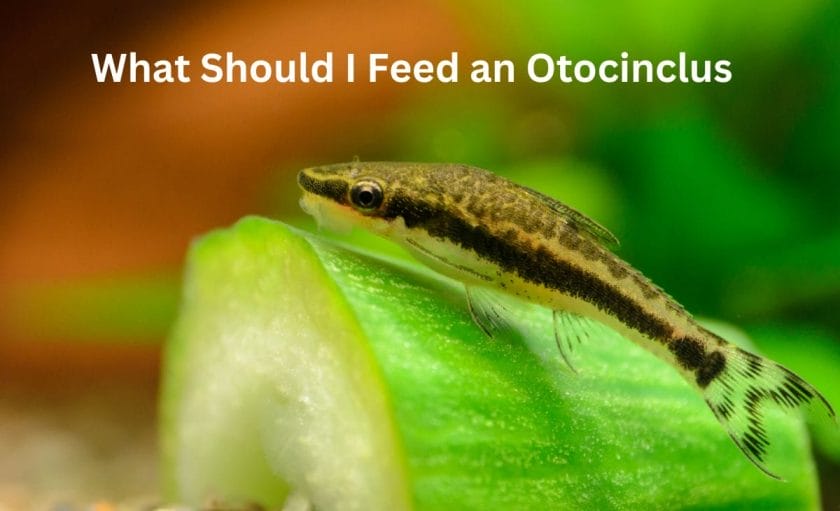
Aside from algae, fishkeepers should also add the occasional veggie and fish food in the tank for otocinclus.
While it’s possible for otocinclus to survive on just algae, it’s not ideal, and most tanks won’t produce enough to satisfy their needs; they’re just that voracious.
Veggies Your Otocinclus Will Love
Not only does a varied diet help target feed herbivorous inhabitants, but it also gives the otocinclus much-needed nutrients.
2-4 times a week using any of the following foods is ideal:
- Zucchini
- Cucumbers
- Spinach
- Lettuce
- Carrots
- Celery
- Kale
- Cabbage
- Bell Pepper
- Yellow Squash
- Brussels Sprouts
All of these veggies should be blanched before use. To do that, follow these important steps:
- Choose a suitable veggie from the above-provided list and wash it thoroughly
- Slice the vegetable into thin pieces that your fish can manage
- Boil water in a pot, about 1 gallon per pound, enough to submerge the vegetable slices
- Place the veggies into the boiling water for 1-3 minutes
- Prepare a bowl of ice-cold water
- Remove the veggies and submerge into the ice-cold water for 1-2 minutes
- Drain and let cool
This process ensures there are no harmful bacteria or pesticides that might affect your fish and softens up the food so that your bottom feeders can enjoy it. If you prefer, you can also use a microwave to blanch your veggies.
Prepare a microwave-safe bowl, cover your veggies with water, and cook on high for 1-3 minutes, more for denser veggies like carrots or broccoli. Again, as with traditional blanching, prepare your ice-cold water and submerge for 1-2 minutes afterwards.
Fish Foods Your Otocinclus Will Love
In the wild, otocinclus will eat insects and small invertebrates. While they’re not as aggressive as their wild cousins, otocinclus in captivity still enjoy an omnivorous diet from time to time. They may enjoy eating bloodworm, kilifish, and other flake or pellet foods.
It’s not necessary to target-feed your otocinclus these foods, just the aforementioned veggies and algae wafers. They’ll nibble the leftovers of these foods when you feed the rest of the tank. I have reliably used Hikari Algae Wafers since I started my first aquarium.
It’s a great option to ensure your otocinclus are getting enough algae in their diet. Once or twice a week is plenty–no need to go overboard. If there are leftover wafers 30-60 minutes after you feed, pick them up with an aquarium net and discard them.
At that point, they’re only going to contribute to ammonia levels in the tank. I’ve also had success with Zeigler’s algae wafers, which proudly makes veggie and algae wafers in the USA. Both companies are highly reputable and worth the investment for your otocinclus.
As for other types of fish food–bloodworms, kilifish, daphnia–your otocinclus will certainly eat them, but you shouldn’t feel obligated to overfeed your tank to make sure your otocinclus get some.
With daphnia, for example, (again, I recommend Hikari’s Multi-Vitamin Enriched Daphnia) other fish in the tank will eat the vast majority of it before it reaches your otocinclus, and that’s ok. They will quite happily nibble the leftovers when they reach the bottom. As with other types of food, if you’ve got leftover fish food 30-60 minutes after feeding time, it’s best to reduce the amount you are giving the tank.
You don’t need to worry about your otocinclus overeating with leftover foods; that’s rarely a concern in an aquarium, and the more pressing matter is the buildup of ammonia caused by uneaten food.
How to Feed Your Otocinclus
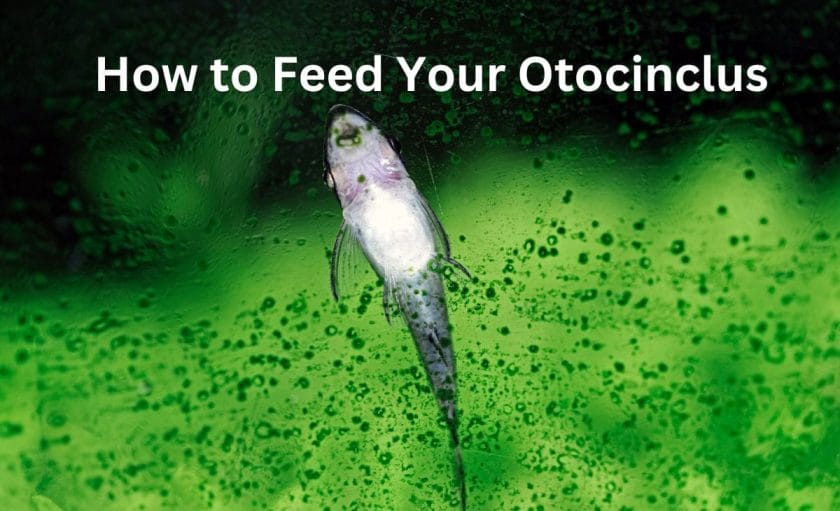
Otocinclus should be kept in groups of 6 or more and may compete with one another for algae, which is why it’s important to provide varied and sustainable nutrition about twice per week. Unless you’ve got a very busy tank, you shouldn’t need to target feed them more than twice per week. Some aquarists choose to feed tiny bits of veggies once or twice per day, but the bottom line is to watch the leftovers.
You can and should adjust the amount you feed based on how much is leftover in your tank. Remember, otocinclus are bottom feeders, which means they generally sit at the bottom of the tank and seek food on the surfaces of the tank. Their specialized mouths allow them to scrape surfaces for algae, biofilm, and diatoms.
Once you’ve blanched your veggies (you don’t need to do anything with an algae wafer!), just add to your tank and watch the magic.
Most veggies will sink by themselves, but if your veggies need a little help, then a suction cup with a clip can help you pin the food to the bottom so that your otocinclus can enjoy. It’s also a great way to set up a timelapse camera if you want to share your fish feeding time on social media or with friends.
You can also pin the food with a fork and place the entire fork in the tank. Just be sure to relegate that particular fork to tank-only use.
A small plant weight will do the trick, too. As mentioned, you generally only have to do this with very leafy greens that won’t sink on their own.
Making Sure Your Otocinclus Get Enough Food
Unfortunately, the answer to how much you should be feeding your otocinclus is “It depends.” There’s no one right answer, but it largely depends on how many fish are in your tank as well as how many other herbivores are going to be munching away at the veggies and wafers you put in.
If you’ve got lots of catfish, shrimp, or other bottom feeders, then you’ll likely need to up the dosage of food to make sure everyone gets a fair chance. It’s also a good idea to feed your omnivores and carnivores at the same time; that way, they’ll be busy chowing down on their own food and won’t bother with the pieces of cucumber slowly sinking to the bottom.
In short, you can use your mighty powers of observation to determine whether your otocinclus are getting enough. If there’s leftover food in the tank an hour after feeding time, then it’s likely that you need to cut back. Food left on the bottom serves as food to algae, leading to a potential algae bloom–even of the unmentionables further up in this article.
With regard to undereating, keep an eye on your otocinclus while they eat. Do they seem to be getting enough food? Are other fish outcompeting them? Do your otocinclus look emaciated?
Each tank is slightly different, and finding the perfect balance isn’t always easy. With time, you’ll find a consistent feeding schedule that works for all of your aquarium fish.
FAQs
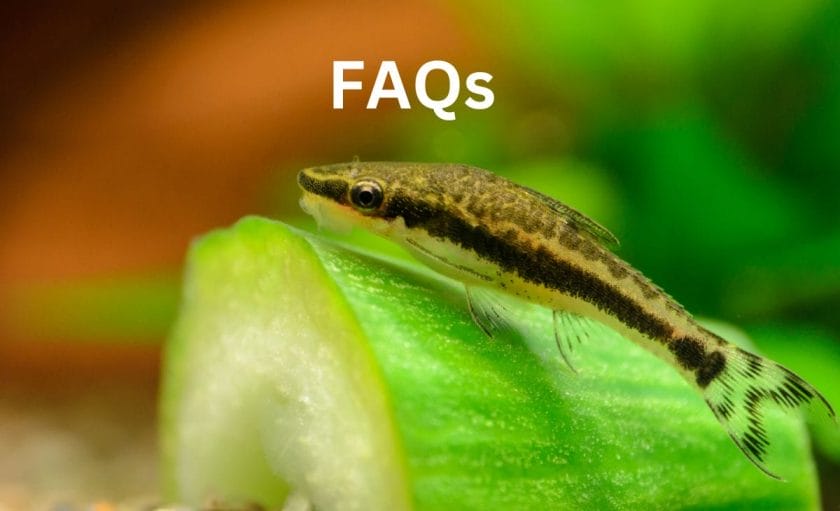
Do Otocinclus Eat Repashy?
Some otocinclus will eat repashy consistently, while others might not prefer it as much. It’s certainly something you can try to add variety and intrigue to your fish’s diet!
Do Otocinclus Eat Just Algae?
Otocinclus can eat predominantly algae, but they also eat diatoms in the tank. For best health, they should also be fed fish food and veggies 2-4 times per week.
Do Otocinclus Eat Other Fish/Shrimp?
Otocinclus in the wild may eat small insects and shrimp; in captivity, they are almost always highly peaceful and are likely not to attack shrimp, even shrimp fry; their peaceful nature makes them an ideal tankmate in most aquarium settings.
Can I Introduce Otocinclus to a Newly Cycled Tank?
It might be ideal to wait a few months until your tank is settled and sustainable, as the first few weeks after cycling tend to be the most susceptible period of time for a new tank. Algae production might not have stabilized, forecasting uncertain food sources for your otocinclus.
Conclusion
The Otocinclus has fairly simple dietary needs: lots and lots of algae. Of course, depending on how much algae your tank produces naturally, you will likely need to supplement algae wafers and include a variety of veggies every few days to keep your otocinclus healthy.
They also appreciate some varieties of fish food, although they can be easily outcompeted for resources.
Be sure to pay attention to the helpful feeding guide above to make sure you meet the dietary needs of your Otocinclus.